This week we are investigating why balls bounce and how different balls bounce differently on different surfaces.
Balls bouncing seems like a simple concept, but the science behind it is quite complicated, so please bear in mind that we have simplified it for our audience.
I asked the children to choose three balls of different sizes, and this is what they came back with. Not only were they of different sizes they were also made of different materials, ranging from soft to very hard.
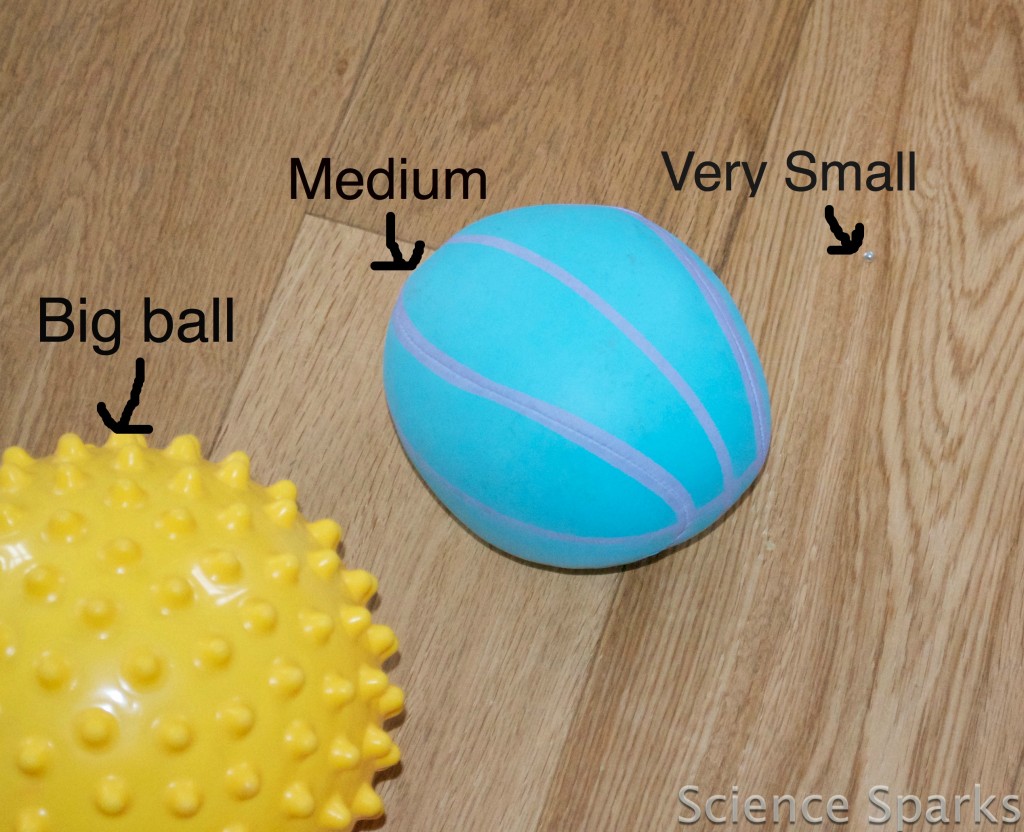
Why do balls bounce?
We decided to test the balls bouncing on three different surfaces:
- carpet
- wood
- tiles
The balls are all made of different materials, which needs to be considered, so we talked about what we could keep constant. We decided that the height from which the balls were dropped was important, as was the force with which they were dropped.
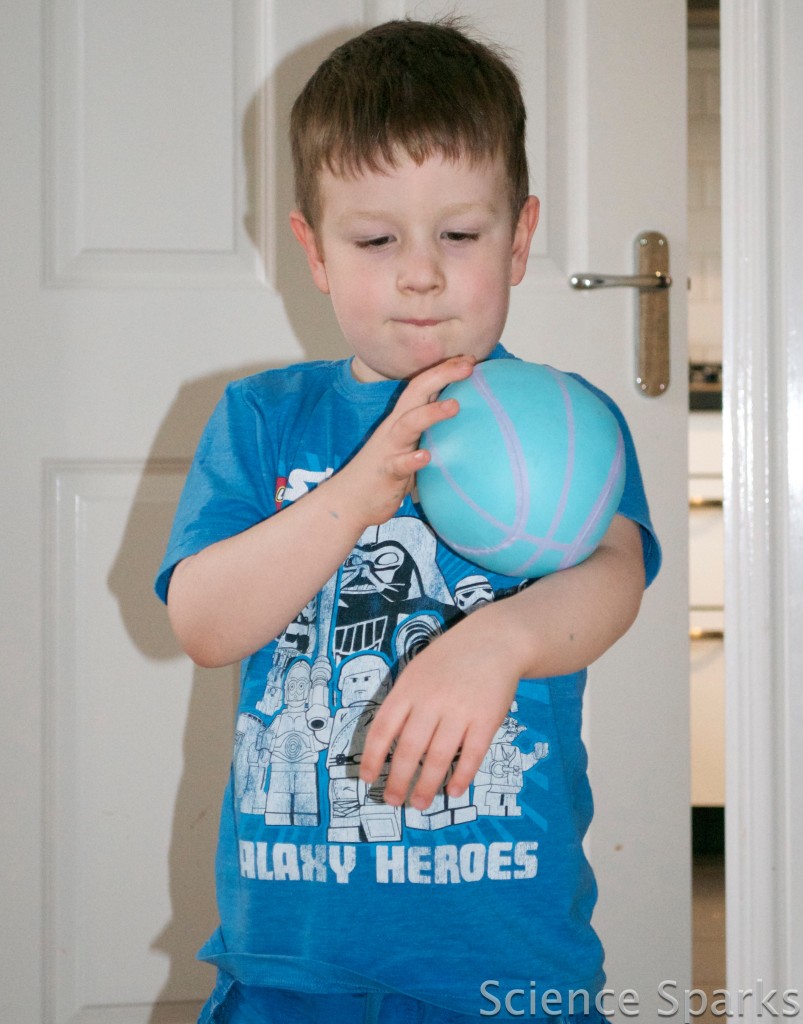
My 5-year-old dropped all the balls from shoulder height each time and tried to just drop without any extra force.
Each time we recorded the results on a simple table of how high the ball bounced.
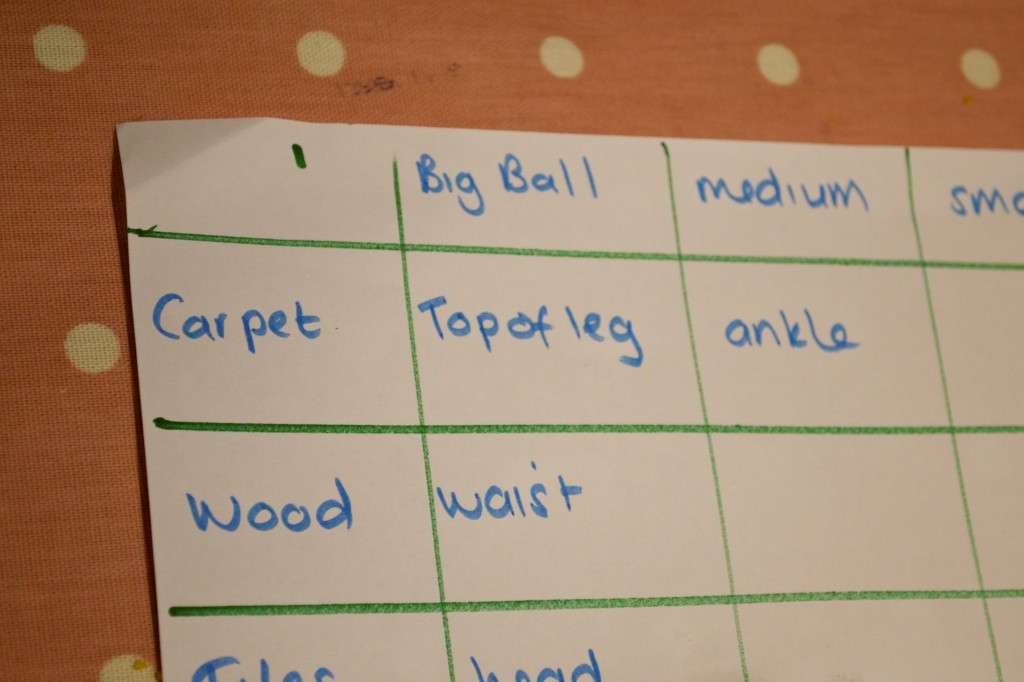
Results
We found that all balls bounced higher on the tiles than on any other surface and lowest on the carpet. The smallest (hardest) ball reached the greatest height on the hard surfaces.
Why do balls bounce?
So, why do balls bounce?
The reason balls bounce is quite advanced science. It relates to how much energy balls have, what they are made of, how they change shape and where the energy they have goes. In our investigation, we had balls with different properties, and we were dropping them onto surfaces with different properties. The children were oblivious to these differences but did expect the bounciness to relate to the size of the ball, which is not necessarily a factor. There is much room for improvement in our investigation. How would you go about making this more scientific? We just liked throwing balls around 🙂
For older children
You could record the number of bounces on each surface for each ball.
Try dropping the balls from different heights, what happens?
Can you get three balls of different sizes made from the same material and see what happens?
We've also got lots more great ideas for learning about forces and motion.
Last Updated on March 14, 2023 by Emma Vanstone
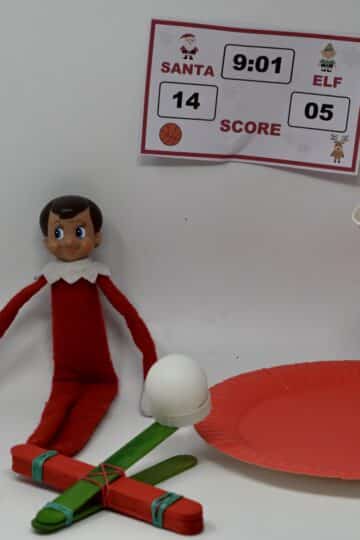

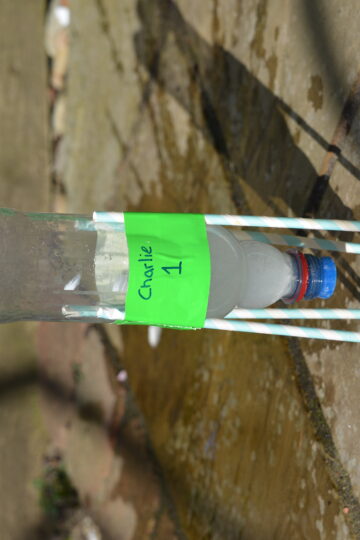
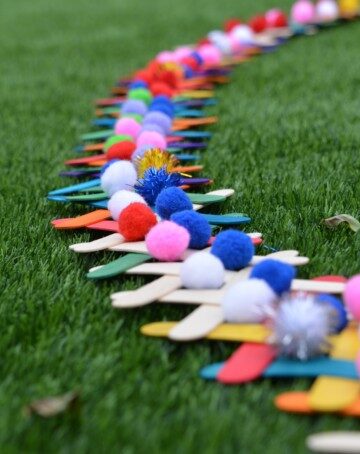
Julie says
I think you did a great job with this experiment for a very young child. My kids are a little older and I have thought about doing something similar. I was thinking we would drop different types of balls off the balcony and try to measure how high they bounce with a tape measure. I'm interested to see the responses you get to your question.
Cerys @ Rainy Day Mum says
Ohhh what a fun activity - what is the tiny ball? We are just discovering things bounce here
JoAnn Jordan says
Yet another fun way to introduce science with a favorite play item! Thanks for sharing.
Carrie says
What a fun experiment. Thank you for sharing at Sharing Saturday! I hope you are having a wonderful week!